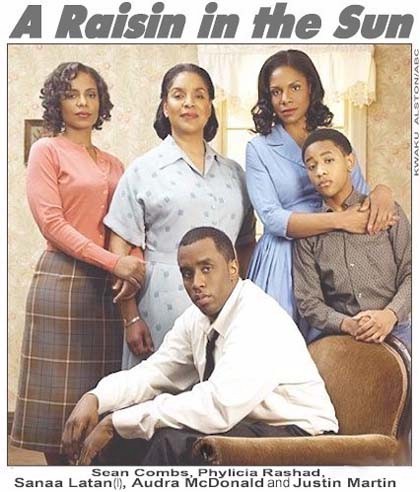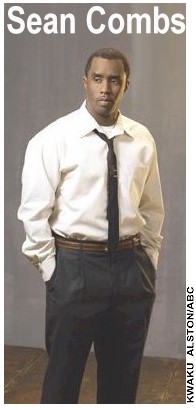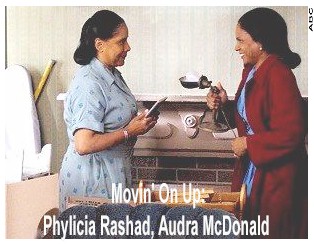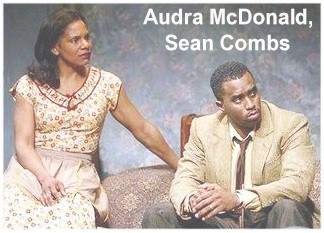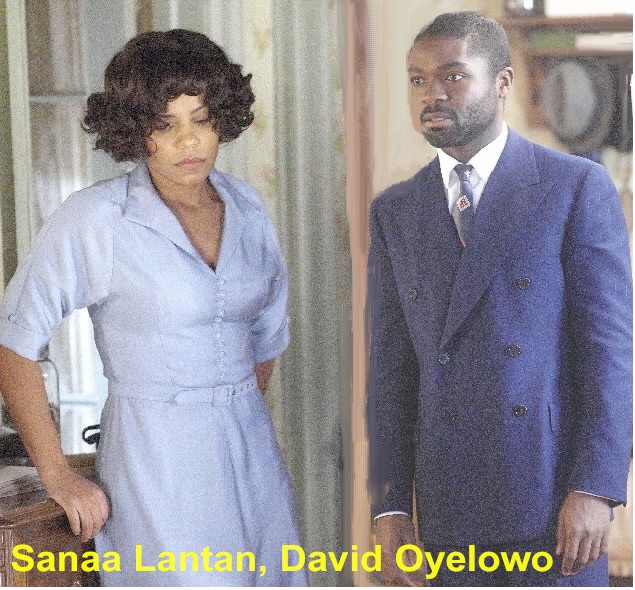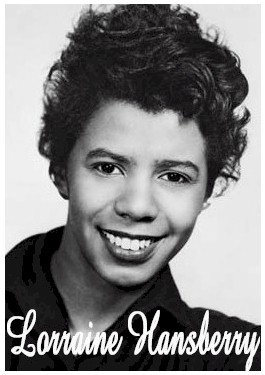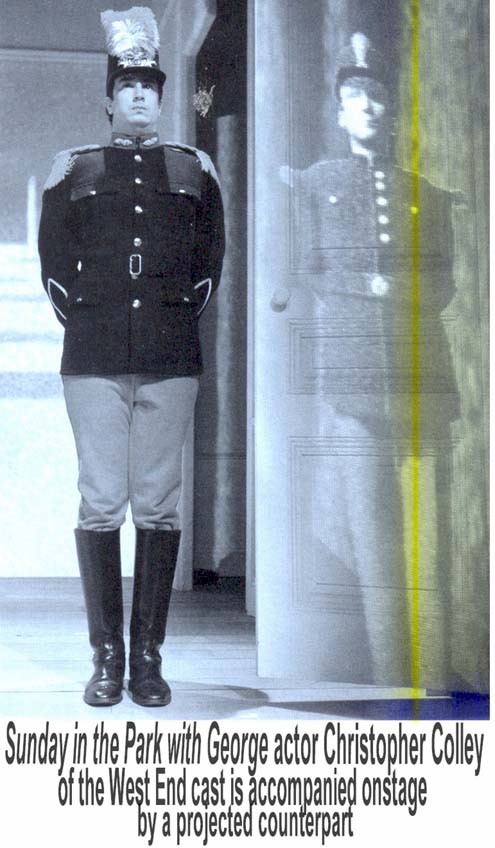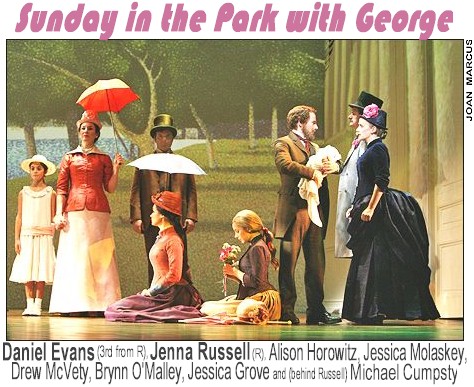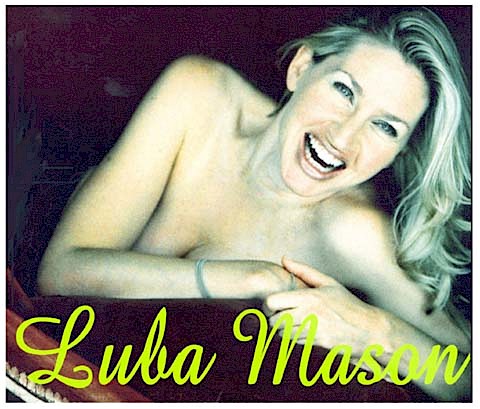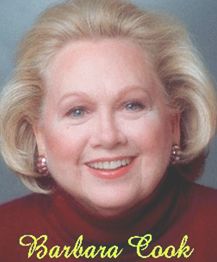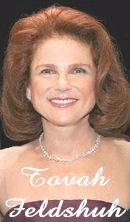As Black History Month Ends: Off Broadway Pioneer Ellen Stewart; Remembering Rosetta LeNoire, Virginia Capers and Bert Williams; More
Ellen Stewart, the much acclaimed and venerated founder and director of La MaMa E.T.C., which celebrates its 47th Anniversay in October. The company occupies a unique presence not only in the storied world of Off Off and Off Broadway but in international theatrical circles. Just as her name is synonymous with controversy and controversial productions, it ranks at the top of the list of daring and avant garde theater.
Make no mistake about it, experimentation, politics, risk-taking and challenging artistic boundaries and the public or various city administration's definition of decency have been the focus of work created at La MaMa.
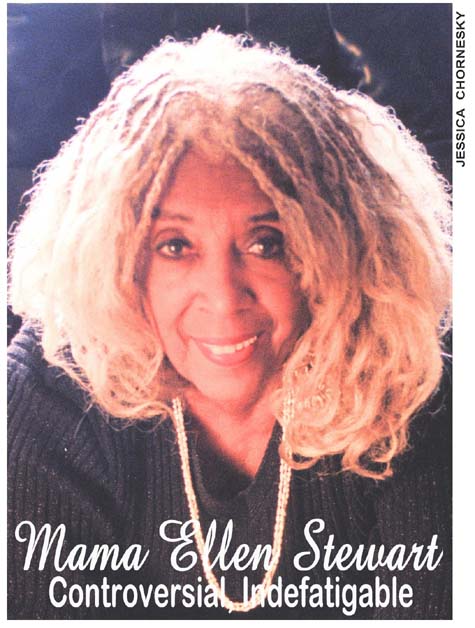
The stories about Ellen Stewart, her struggles against censorship and the establishment are legendary and could fill a couple of books. She's been arrested and ridiculed and harangued in news articles. The problem is you don't how many of these stories are true and which have been exaggerated. So to get to the bottom of things, it was wise to go to the "horse's mouth."
Ms. Stewart, now in her 80s and going as fast as she can here and overseas, often in four directions at the same time, doesn't grant many interviews. But when she does, you can bet it's going to freewheeling, informative and a helluva lot of fun.
Her Greenwich Village loft apartment on the top floor of the La MaMa complex on East Fourth Street, between First and Second Avenues, is filled with photos, books, plays and a vast array of music and theater memorabilia; so vast, in fact, you might wonder if this lady could put her fingers on something she wants when she wants it or when some inquiring mind asks a question about that something.
Worry not because, like Joe Franklin in his office of nostalgic memorabilia that gives "piles of clutter" a new definition, Mama, as anyone remotely close to her calls Ms. Stewart, knows exactly where it is, how long it's been there and who's touched it last. And you better ask before you touch it!
The company's philosophy can be summed up in their mission statement: "La MaMa believes that in order to flourish, art needs the company of colleagues, the spirit of collaboration, the comfort of continuation, a public forum in which to be evaluated and fiscal support."
Annually, La MaMa prides itself on introducing to audiences at its two East Village venues to artists from around the world. "Cultural pluralism and ethnic diversity have been inherent in the work created at La MaMa," notes Ms. Stewart. "Whatever else you say about us, and plenty has been, you definitely can say we are an international theater company."
To date there have been more than 1,900 productions - and over 1,000 original scores. Resident troupes have traveled the world: Australia, Austria, Brazil, Columbia, Belgium, Croatia, Denmark, England, Finland, France, Greece, Holland, Iran, Italy, Korea, Lebanon, Venezuela, Macedonia, The Netherlands, Scotland, Siberia, Spain, Sweden, Switzerland, Turkey, Ukraine and Yugoslavia.
Mama has lectured and directed, written librettos and composed music for shows presented throughout Africa, Asia, Europe and Latin and South America.
La MaMa has given work to fledging actors, such as Bette Midler, before anyone ever heard of her, and writers such as Harvey Fierstein and Sam Shepard; composers Tom Eyen, Philip Glass and Elizabeth Swados; directors Wilford Leach, Tom O'Horgan and Romanian director Andrei Serban [still active with the company]. The company introduced New York to troupes such as Mabou Mines; and theater from the Eastern bloc, especially with the debut in the company's first decade of Polish ultra avant-garde theater director Jerzy Grotowski.
The company name came about because playwrights, directors, actors, designers and staff in the early years considered Stewart a mother figure. As one put it, "In those days, we were all kids and she was the adult." Actually, in mind, body and spirit, she was probably younger than them. To this day, even in her 80s, she still thinks young and has a sly, devilish spirit. And an incredible memory!
In a rare nod to Off Broadway and beyond, in 1993 Stewart was elected by critics to the Theatre Hall of Fame. She's been honored with dozens of Drama Desk Awards and over 30 Obies. And Ms. Stewart has been given so many honorary and distinguished service awards and doctorates that she has an archive and archivist to keep track of them; and cataloging the early work presented.
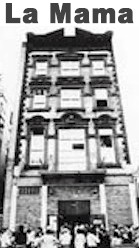
La MaMa started ever so simply. It was such a lark that, according to Mama, no one really knew exactly what they were doing. They just had ideas and decided they were going to bring them to fruition. "Never in a million years did I ever think we would accomplish all we've accomplish and become what La MaMa has become," she says. "Our mission was and is to develop, nurture, support, produce and present new and original performance work by artists of all nations and cultures."
In fact, growing up in Chicago, theater never entered Ellen Stewart's mind. She wanted to be a fashion designer. As a young black woman, she knew it wouldn't be easy. "No surprise," she laughs, "it wasn't. At that time Chicago had nothing on the Deep South as far as racism rearing its ugly head."
To escape, she came to what she thought was very cosmopolitan New York City. But there were surprises here, too. "Bernard Gimbel, then president of Gimbel's, hired me as an executive designer for their Sak's Fifth Avenue store, but found resistance from their high-end customers." But stick by her, he did. By the time doors started to open, she had met an interesting circle of friends - some in very high places. And, in a nutshell, she decided one night to put on a show.
La MaMa began as a tiny, second-floor space over a Second Avenue tailor shop. Interestingly, Miss Stewart said she didn't start off looking to be controversial, "but we certainly stirred up quite a bit of controversy."
The first play "to get us some headlines" was O'Horgan's 1964 production of Genet's The Maids " because of his decision to do it with boys." She notes that the show that really put La MaMa "on the map," and in more ways than one, was 1967's Futz by Rochelle Owens and directed by O'Horgan.
The dark, very dark, comedy didn't exactly conform to social norms of the day. Without raising her voice in exclaimation - in fact, very matter-of-factly, Mama recounts the story. "It was about a farmer who's had so many bad experiences with women that he falls in love with Amanda, his pet pig, and marries her. There was also a very attractive, but not too tightly-wrapped hayseed who's a Peeping Tom at Mr. Futz's basement window. While Mr. Futz had, well, darlin', let's just say intercourse with his pig and told her that they'd always be together, the chorus made sexual sounds which was exciting the boy. The town's most beautiful and richest girl - a stunning blonde, has a crush on him.
John Bakos [Cyrus Futz] starred along with Seth Allen, Mari-Claire Charba and Frederick Forrest. Sally Kirkland did narration.
"Now, Tom is a composer and musician," she continues, "He could play every instrument imaginable. So there he is in the wings with various instruments tied and hanging on him - a one-man orchestra. He had made a living singing on the Borscht Best as a counter tenor and he was making these sounds.
"One night, the boy brings the girl to watch Mr. Futz and Miss Pig. He starts using Mr. Futz's rhythm and the more Mr. Futz gets - gets - you know. Yes - very excited, the more the boy gets excited; and, in a very dramatic and graphic scene, he rapes the girl. He's arrested and is sentenced to hang. His mother comes to pay a last visit and they commiserate in a Southern cracker dialect. To suckle him, she exposes a breast and puts it in his mouth. Well. Right. Nothing like this had been done before."
As word spread, lines formed around the block. La MaMa's tiny space couldn't contain the crowds. When asked how long a run the play enjoyed, Miss Stewart laughs, "We don't got runs. We never had runs. Unless you want to count me running. La MaMa's early history is marked by the number of times I was running. Running from the police! Always running! We couldn't stay long!"
Mama also decided to tour the show in England and Europe. "Now, after what happened here, imagine this in very conservative Edinburgh!" Were there protests? "Protests?" she asks. "Oh, yes! The Scottish Daily Mail accused me of shipping filth to their country."
The controversy sold tickets. "They had lines down the block," she states not able to control her excitement or laughter, "and around the block, down and around another block, across the street and down another block. You had to see this scene of local women protesting with placards accusing us of all sorts of things, and audiences wanting us to do five shows a night!" As it played Germany and other cities in Europe, the scene was repeated over and over.
"You wanted to know what put us on the map!" adds Mama. "After that, we were known! So we all were laughing when there was all that fuss over nudity in Tom's Hair. That was nothing!"
Futz! later transferred to what is now the Lucille Lortel and Actor's Playhouse; and was filmed, says Miss Stewart, "with Sally riding buck naked on a pig!"
Bette Midler got her first theatrical break at the original La MaMa on Second Avenue with Tom Eyen in Miss Nefertiti. "She had just arrived from Hawaii," recalls Miss Stewart, "and she was a knockout. Quite voluptuous. Those breasts! She was supposed to be nude from the waist up, but Bette was quite modest in those days. She wouldn't take her hands off her boobs. We would go, 'Bette, psssst. Come on. Go ahead.'"
Harvey Fierstein, whom Mama had the pleasure of introducing at his recent induction into the Theatre Hall of Fame, also started at La MaMa. "We will never forget his debut!" says Stewart. "He came running onstage with his fly unzipped and his cockylove popped out. He ran off stage and I had to get down on my hands and knees to sew the fly shut."
Nudity in La MaMa shows caused "some" problems, but, says Mama, "I never did it; but, back in the day, I was really beautiful and if a role called for me to run naked, I would have. But no more!"
It didn't take long for La MaMa to outgrow Second Avenue. In 1969, it began business on East Fourth between First and Second Avenues in a building that now comprises two theatres and a cabaret.
Stewart discovered the work of Serban and brought him to La MaMa that year. "I was much more political then, and concerned with the state of the Negro or black or whatever we were called and how we were shown culturally. I wanted to do theater where a black could play a role that didn't require a needle in the arm, a jail cell, being a domestic washing dishes or clothes or being in the morgue."
To accomplish this goal Serban, "who didn't know from black and white," and Swados chose Medea, and cast black actress Betty Howard. It was decided to do the play in Greek because "to Andrei and Elizabeth's ear, the way Americans spoke English didn't sound poetic enough." She is cracking up laughing, having a difficult time catching her breath as she described the long process of putting the play in French, German and several other languages. Finally, Andrei, who's half Greek, said, 'Let's try Greek.' I got a tutor to teach the company and it was sounding pretty good. Still, with the music Elizabeth had in mind, they decided to translate further into 'Ancient Greek,' and were finally satisfied the music went with that."
